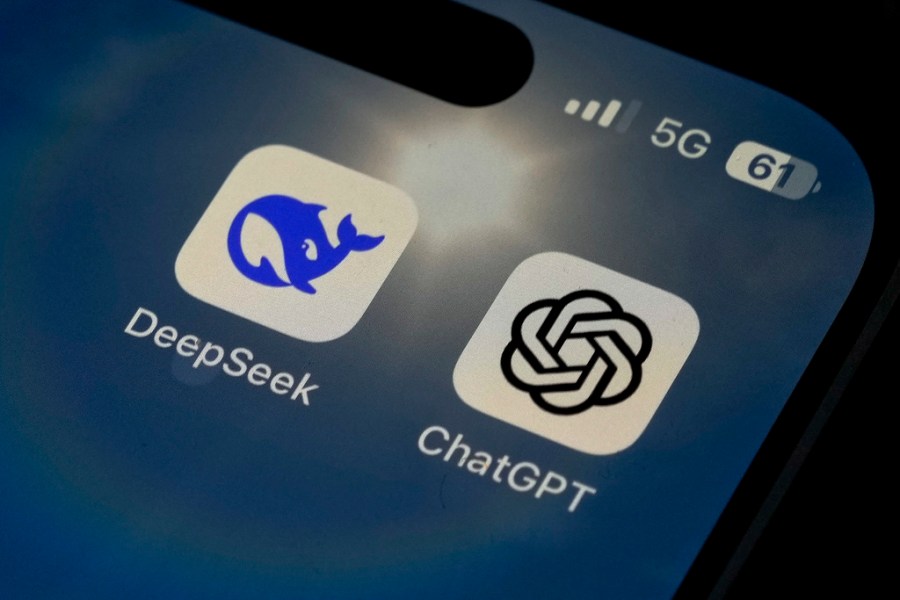
Launch of the DeepSeek chatbot has delivered a wake-up call for U.S. policymakers. While the “breakthrough” now appears to have been overstated (total expenditures have been estimated in excess of $1 billion, rather than $6 million as originally claimed, and DeepSeek may have had greater access to advanced chips than previously believed), even skeptics recognize that DeepSeek achieved cost-efficiencies that incumbents must now match. Hence OpenAI’s early release of its o3-mini model in late January 2025.
The DeepSeek launch should not only cause existing model providers to accelerate development but also alert policymakers that seek to preserve U.S. leadership in the global artificial intelligence ecosystem. Three policy lessons can be drawn from this event.
First, it is urgent to revisit the dismissive approach that has been adopted by much of Silicon Valley and the policymaking community concerning the importance of intellectual property rights. OpenAI’s concern that its models’ outputs may have been used by DeepSeek, even though OpenAI makes liberal use of others’ content, illustrates the short-sightedness of this approach.
As I show in a new book, the current weak intellectual property environment emerged out of advocacy and litigation efforts by leading platforms, and like-minded commentators, to curtail patent and copyright protections. This strategy promotes an aggregator business model that commoditizes content and tech inputs developed by others, which are then monetized within an ecosystem of complementary services.
Platforms naturally prefer to minimize the price of those inputs — which can be achieved through negotiation or by weakening intellectual property rights. That legal strategy has been pursued so successfully that intellectual property rights often exert little deterrent effect.
While this “intellectual property lite” regime may reduce costs for platforms and users, it has produced a skewed ecosystem that tends to favor aggregator business models over independent originators. For a startup that is outmatched on every competitive parameter except innovation, an intellectual property portfolio can level the playing field. Copyright or a technological equivalent is necessary to sustain markets that generate payments to reflect the value of creative assets.
In biopharmaceuticals and semiconductors, insecure intellectual property rights may have induced venture capital to shift away from these patent-dependent markets that are critical for public health and national security.
Second, it is imperative to abandon the dogmatic “big is bad” approach to antitrust enforcement often pursued by the Biden administration.
Digital markets tend to evolve toward high concentration level and therefore merit scrutiny to confirm that market winners are still competing on the merits, rather than erecting barriers to rivals. Yet this does not justify the extreme skepticism toward platforms adopted by antitrust enforcers in the U.S., EU, and elsewhere, who often seem to presume guilt without significant factual inquiry.
Although intellectual property rights should be bolstered to support tech and content originators in innovation markets, a targeted approach to antitrust enforcement must also recognize platforms’ critical role as hubs in the digital ecosystem. Platforms’ scale delivers benefits through lower prices, reduced transaction costs and expanded product variety.
Through the “rule of reason” developed during decades of federal case law, courts and agencies must weigh those pro-competitive “goods” against the anti-competitive “bads” attributable to any contested business practice.
A “big is bad” approach also overlooks that U.S.-based platforms are engaged in global competition with China-based rivals, who often benefit from state subsidies and large protected domestic markets. This is not simply a commercial contest to secure market share but a geopolitical contest to set governing standards in the information technology infrastructure that underlies the global economy.
Those standards ultimately reflect profoundly different views of individual freedoms and political governance — as illustrated by the censorship reportedly reflected in certain DeepSeek outputs and regulators’ concerns over the chatbot’s data storage policies. This high-stakes contest between autocratic and democratic systems is taking place both in virtual markets, such as AI models, operating systems, and chip design, and physical markets, such as data centers and submarine cables (in which U.S.-based platforms are active).
Failure to take into account the global competition faced by U.S.-based platforms can lead regulators to pursue blunt structural remedies that undercut U.S. tech leadership. There is precedent for this concern. While the breakup of AT&T in 1982 was a landmark achievement, policymakers’ failure to consider how to preserve Bell Labs discarded a crown jewel asset in the U.S. information technology industry.
Third, it is pressing to reconsider some of the export controls on advanced AI chips proposed by the former administration.
Those rules divide the world into Tier 1, 2 and 3 countries, where Tier 1 countries face no export controls, Tier 2 countries face significant controls and Tier 3 countries face an export ban. The case for limiting exports to many of the countries included in the Tier 2 category is difficult to understand. In prior research, I have shown that a small group of countries lead in technological innovation. The placement in Tier 2 of some of those countries, including Israel, Switzerland, and emergent tech clusters in Eastern Europe, misses the opportunity to cultivate a tech-based coalition across liberal democracies.
The export controls on significant developing-country markets placed in Tier 2 reflect diversion concerns but risk driving demand toward “good enough” substitutes from China-based rivals. Moreover, the proposed rules require that U.S.-based cloud providers maintain a significant percentage of “AI compute” in the U.S. and Tier 1 countries. That could discourage providers from locating facilities in geopolitically and economically significant Tier 2 markets, forfeiting another opportunity to nurture “innovation coalitions” through tech-based investments.
The DeepSeek launch may fade from attention as competitors match or outperform on efficiency, price and data security. Yet it provides a valuable opportunity to act across multiple policy domains to cultivate a global AI ecosystem committed to freedom of expression, thought and enterprise.
Jonathan Barnett is the Torrey H. Webb Professor of Law at the University of Southern California, and recently published “The Big Steal: Ideology, Interest, and the Undoing of Intellectual Property.”












